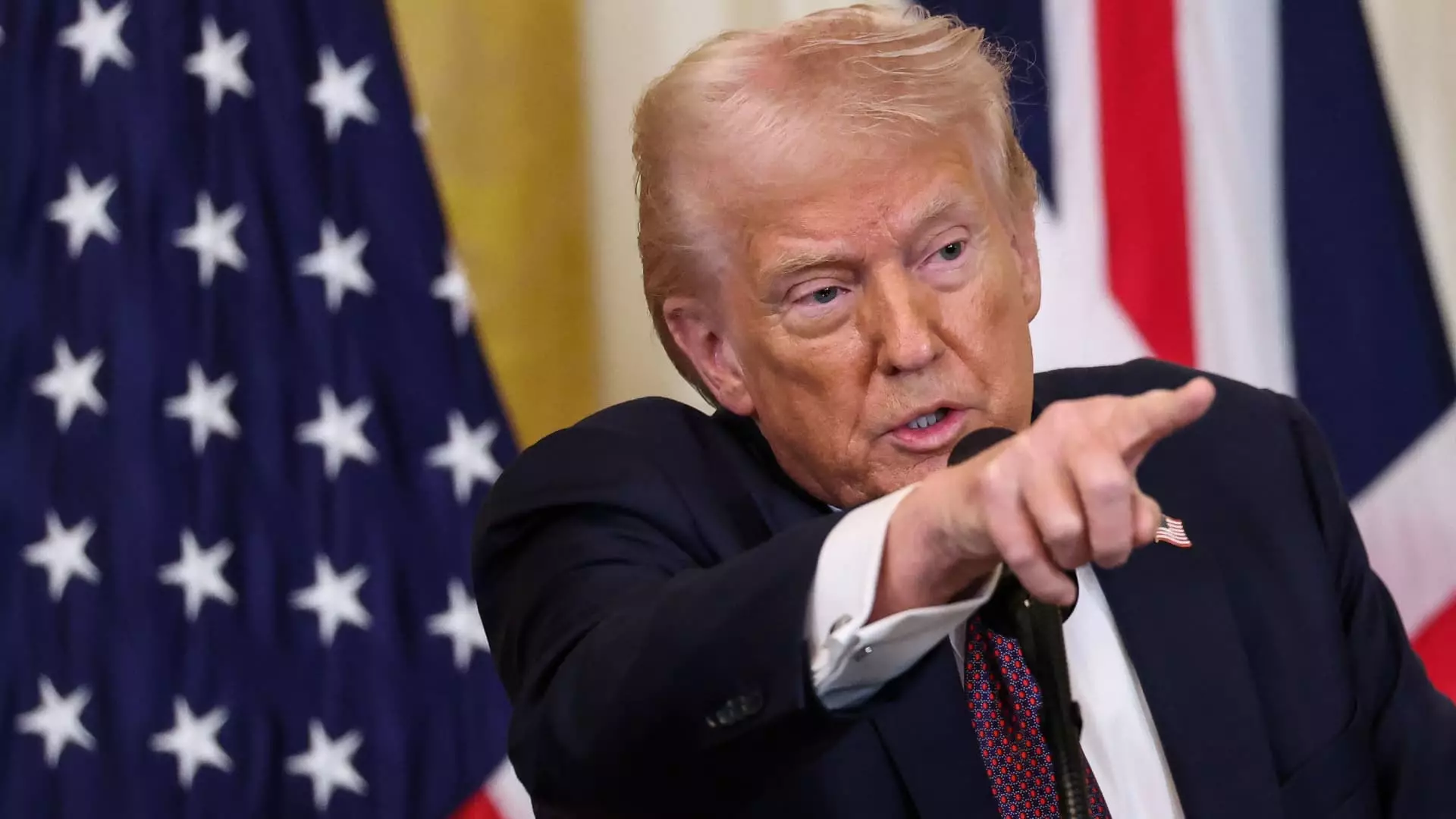In recent years, the traditional investment landscape has been punctuated by the uncertainty that accompanies governmental policies, especially those stemming from the White House. As fiscal strategies evolve, a new financial safeguard is emerging—termed the “White House put.” This concept suggests that the administration may intervene with fiscal stimulus to stabilize the economy and stock market when faced with adversity, particularly in light of policies such as tariffs that could inhibit growth. This innovative form of economic support contrasts with the well-known “Fed put,” where the Federal Reserve has historically intervened to prop up market confidence through monetary policy.
Market strategist Tom Lee has emphasized that the idea of a “White House put” remains relevant, particularly as concerns surrounding economic slowdown grow. According to Lee, the current administration’s prioritization of maintaining economic momentum can prompt them to introduce measures that alleviate investor anxiety. Such strategies aim to avert a “stall speed” scenario—where economic activity dwindles to a point of potential recession. In other words, the government is positioned to act decisively to help foster recovery and maintain market integrity.
Recent consumer sentiment surveys reveal increasing unease regarding the administration’s economic policies, particularly amidst fears of inflation resurfacing. While these inflationary anxieties may not be readily observable through market-based indicators, declining bond yields suggest that investors are becoming increasingly wary of recession risks. The interplay of these factors paints a complex picture of market health, as heightened apprehension among consumers can lead to changed spending habits, further exacerbating economic vulnerabilities.
As fiscal policies continue to unfold, there is substantial speculation regarding the Federal Reserve’s next moves. Analysts are closely watching for a potential shift towards dovish monetary policy, which may involve lower interest rates to mitigate the impact of an economic downturn. This possibility was underscored by recent data indicating a drop in consumer spending and corresponding adjustments to growth forecasts, such as the Atlanta Fed’s GDPNow tracker projecting a contraction in the first quarter. This signals a shift in economic dynamics that could well influence policy decisions moving forward.
A Closer Look at Market Reactions
In the throes of uncertainty, strategists like Michael Hartnett from Bank of America have outlined thresholds where market intervention might become necessary. These “strike prices”—the levels of the stock indices where investor sentiment might trigger calls for support—highlight crucial points of market vulnerability. For instance, Hartnett identified the S&P 500’s first strike price at 5,783, revealing a slight buffer where investor expectations may hinge on verbal reassurances from policymakers.
This creates an intriguing narrative around the behavioral economics of fear and optimism in financial markets. Just as “Stocks Down Under Trump” headlines loom, there’s a call for proactive measures to safeguard stock valuations. Should the index approach these identified levels, it’s likely that a chorus of investor and analyst pressure will be felt, prompting the administration to consider more pronounced interventions to stabilize markets.
The ultimate shape of any intervention remains uncertain, as President Trump himself has hinted at upcoming tariff increases, which could further complicate the economic landscape. As tensions rise over potential trade wars, the markets are caught in a balancing act, oscillating between investor optimism grounded in infrastructure spending and fiscal cutbacks against the backdrop of tightening trade relations. Compounding this issue, the administration’s simultaneous efforts to reduce regulations and promise tax cuts introduces additional layers of complexity in evaluating market stability.
As we navigate the current economic environment, the presence of a “White House put” can serve as a strategic tool for investors while illuminating the multifaceted nature of fiscal policy and market psychology. Understanding how government actions influence market dynamics becomes increasingly vital. Furthermore, the integration of these concepts challenges traditional investment wisdom, emphasizing the necessity for adaptability in a landscape marked by rapid change and evolving economic paradigms. Ultimately, the “White House put” emerges not just as a buffer for stock performance, but also as a reflection of the interconnectedness of policy and market behavior in a contemporary framework.

